MARKET OVERVIEW
The Global Medical Protective Wear market is an integral part of the health care industry. As such, it ensures protection and well-being of the staff in the hospitals as well as patients. Medical protective wear includes gloves, gowns, masks, face shields, and other clothing to protect against infectious agents, contaminants, and hazardous materials. The market has seen a revolution of interest due to the emerging awareness of healthcare-associated infections and the measure of rigid infection control practices in healthcare places.
Therefore, the Global Medical Protective Wear market will only grow in importance with the passage of time, given the emerging health threats where protection needs to be properly catered to. The demand for high-quality medical protective wear is not limited to hospitals but expands to clinics, diagnostic laboratories, and research institutions. In the light of an expanding innovation and adaptability front, each of these places will need specialized protective equipment according to their requirements.
Medical protective wear will have to rely a lot on design and standards of regulation. Different health organizations and regulatory bodies are likely to come up with more stringent guidelines to ensure that protective wear meets the best practices in safety. The designations not only enhance the quality of products but also boost the confidence of the healthcare workforce and patients as well.
Developments in the field of material science and technology will also be taking the Global Medical Protective Wear market a long way. Innovations in fabric technology and in antimicrobial and antiviral materials will bring a sea change to the efficiency of protective wear. In addition, the use of sustainable and eco-friendly materials will limit the concerns of environmentalists, making them more attractive to green consumers.
Manufacturers in the Global Medical Protective Wear market will hence pay more and more focus on research and development to come out with products that are offering superior comfort and functionality. The ergonomics of medical protective wear would be taken into consideration; healthcare workers would be wearing protective wear for long hours. Lighter, more breathable and easier to wear protective wear may win the market to ensure users stay comfortable yet protected.
Another important aspect of the market for Global Medical Protective Wear is the role of supply chain management. Steady and reliable supplies of raw materials and finished products will make all the difference in meeting the rising tides. Firms would have to build more resilient supply chains capable of absorbing the shocks like those experienced in times of global health crises. This would entail supplier diversification, investments in local production capability, and deployment of cutting-edge logistical solutions.
There will also be more collaboration between the manufacturers and healthcare providers in the development of protective wear. Through close interaction, identification of specific needs and challenges will lead to development of better and user-friendly protective wear. Collaboration drives product innovation and ensures better training and education for healthcare workers on the proper use of protective equipment.
Fast forward, and the Global Medical Protective Wear market will have been continued to be transformed. Now, data analytics and artificial intelligence technologies will help the manufacturers forecast the next demand patterns and allow optimal design of production processes that create great products. Smart protective wear, equipped with sensors for vital signs and surrounding conditions, adds extra layers of protection and functionality.
In these respects, it can be said that the Global Medical Protective Wear market is going to experience the significant development in the short term due to new regulatory landscape crafting while new technological innovation penetrates the market and will carry out through the synchronized efforts of collaborative health care industry. Continued maturation of the market will be highly demanded in order to fight against the dynamic challenges related to health-care-associated infections and other health threats. By ensuring quality, comfort, and sustainability, the market will protect healthcare workers and patients throughout the world from the safety and wellness they need to fulfill their mission in the global healthcare ecosystem.
Global Medical Protective Wear market is estimated to reach $2,525.0 Million by 2031; growing at a CAGR of 7.8% from 2024 to 2031.
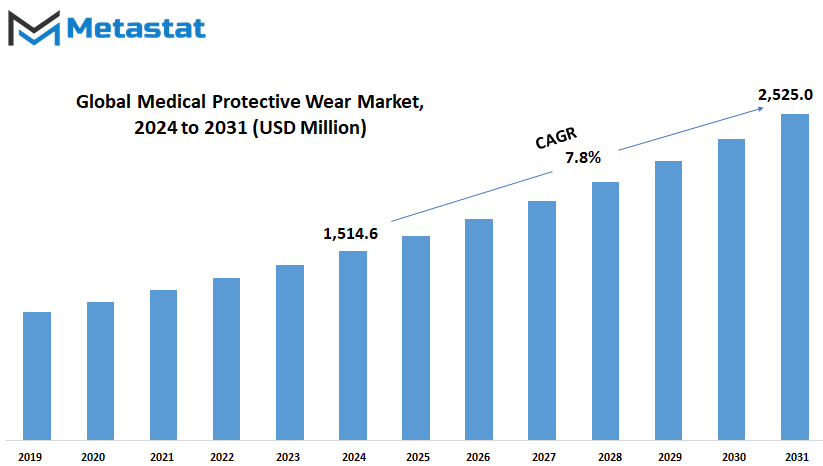
GROWTH FACTORS
Market for Global Medical Protective Wear is well poised for tremendous growth because of an array of factors that are going to shape in the coming days. A key factor in heightening demand for medical protective wear is the increasing incidence of infectious diseases and pandemics. Emerging and spreading health crises further underline the need for effective medical protective wear, ultimately resulting in a surge in the growth of this market. That trend is expected to continue as global health challenges demand sophisticated protective solutions.
Apart from the increase in the burden of disease, very strict regulations and safety standards at healthcare facilities are the most significant factors in the market's growth. Regulatory bodies set and enforce higher standards for the protective wear to ensure safety and well-being for patients and healthcare workers. These will ensure higher penetration of quality protective wear in these healthcare facilities that aim to comply with those requirements and keep the environment safe.
However, there are certain challenges that need to be bumped into for the emerging Global Medical Protective Wear market. A big factor that stays a preoccupation is the huge production cost of the advanced protective gear because making such wear covers huge outlay. Also, with such huge costs, the availability and affordability of the wear could be reduced in a manner that the market accessibility would become limited. In addition, the prospects of a supply chain disruption still exist, which may lead to both delays and shortages in the delivery of protective gear.
Another area in which there is huge challenge is that of environmental concern. Landfilling of disposable PPE bears huge environmental concerns, and, in general, the trend today has shifted towards sustainable solutions in this area. With the environmental cost of medical waste becoming more evident, the general push is to find alternatives that are friendly to the environment.
One of the greatest market opportunities lies ahead in the very near future—innovations for protectives made out of reusable materials that are also sustainable. New materials addressing current environmental challenges while balancing durability with environmental responsibility are likely to emerge with the increase of research and development. New doors for market growth can be opened with these innovations, and healthcare providers will also be willing to consider such a move.
Conclusively, the Global Medical Protective Wear market offers huge growth as a result of the increasing health bias and stringent safety regulations. On the other hand, there are some negatives, such as high cost of production and environmental considerations. Opportunities will emerge with the development of sustainable and reusable material, opening up changes in the market landscape over the next several years.
MARKET SEGMENTATION
By Product
The Global Medical Protective Wear market will witness tremendous developments in the near future with advancements in technology and rising healthcare needs. This market contributes to a wide range of protective wear products, including but not limited to, and continues to grow with different healthcare systems all over the world becoming more oriented towards protecting their workforce and patients. Among the primary categories of medical protective wear, coveralls, gowns, and other types of protective apparel will be major influencers of the future trajectory.
Coveralls are designed to give full-body protection, and hence, full-body-coverage-type protective wear is likely to witness an increase in demand in the near future. This particular category of protective wear happens to be most critical in environments where exposure to hazardous materials is a potential threat. As healthcare facilities continue to evolve to address emerging threats, the demand for sound coveralls will most definitely become more pronounced. Improvement in materials and design will create further enhanced protective capabilities of the coveralls, placing them at the very forefront in infection and contaminant protection.
Another crucial segment is gowns, which will also see continuous growth. They are primarily used for hygiene purposes and protection from various procedures. Thus, in a high-sanitation and infection-control-sensitive environment, gowns will never go out of demand. Some future developments in the gown segment may be related to the improvement of gown materials so that they are comfortable to wear and more durable, resistant to different kinds of biological dangers.
Others include items such as coveralls and gowns, face shields, masks, gloves, and more. This segment is projected to grow as these products are of paramount importance in many medical situations wherein specific protection is necessitated. The importance of these items within healthcare settings will be underlined by improvements in functionality and performance attributed to technological gains.
In the near future, the Global Medical Protective Wear market will be fueled by increasing emphasis on health and safety protocols. The continuously changing healthcare systems and new challenges brought continuous demand for advanced protective wear. New material inventions and design may improvising effectiveness in coveralls, gowns, and other protective items to ensure their meeting of the rising standards of medical safety and hygiene.
In a nutshell, the future of the Global Medical Protective Wear market will be marked by huge improvements in the segments of coveralls, gowns, and other protective clothing. Growing healthcare demands and new challenges will keep harboring with new inventions, and safety and protection will become increasing concerns.
By End-user
It grows with the light of changing healthcare needs around the globe. The Medical Protective Wear market refers to a wide range of protective apparel that helps protect healthcare professionals and their patients. It can be segmented into Hospitals, Home Healthcare, Outpatient/Primary Care Facilities, and others, by end-use.
Hospitals are significantly large segments of the Global Medical Protective Wear market. Protective wear includes gowns, masks, gloves, and face shields, which form an important part in maintaining a sterile environment within any facility to reduce the risk of infections. With increasing cases most hospitals handle and other emerging health threats, demands for quality protective wear are likely to increase. Improvisations on materials and designs will be characteristic of enhancing the effectiveness of these products, making sure that they render superior protection and comfort to the medical staff.
Home healthcare forms the other important market segment. With patient care trending towards a home setting, the need for protective wear adhering to stringent specifications of safety and hygiene is on the rise. This sector will probably witness the development of protective wear designed for the home setting; such protective wear will be lightweight, comfortable, and easy to use. As customized health care within the convenience of one’s own homes becomes increasingly widespread, so will the creation of more specialized protective equipment to accommodate this trend.
Outpatient and Primary Care Facilities also play a vital role in the Global Medical Protective Wear market. Protective wear applied in such settings calls for versatility and durability. The demand for protective gear in these facilities stems from the ability to efficiently handle various conditions while ensuring the safety of the patients and care providers. The market will most likely witness further innovations aimed at protective wear that is functional and can be afforded to be used frequently in outpatient settings.
The "Others" category also includes a large number of other settings in which medical protective wear is most required. This segment will include a variety of specialized applications wherein tailored protective gear will be required. New opportunities for protective wear in unique environments will come up as the healthcare landscape continues to change, further diversifying the market.
It will further expand and innovate in the near future with the growth in material sciences and increasing health and safety considerations. Every segment, be it hospitals, home healthcare, outpatient facilities, or others, will continue to see specified protective solutions aimed at improving their safety standards. Market growth will be driven by continuing changes in healthcare practices and the move toward enhancing protective measures within varied healthcare environments.
|
Report Coverage |
Details |
|
Forecast Period |
2024-2031 |
|
Market Size in 2024 |
$1,514.6 Million |
|
Market Size by 2031 |
$2,525.0 Million |
|
Growth Rate from 2024 to 2031 |
7.8% |
|
Base Year |
2022 |
|
Regions Covered |
North America, Europe, Asia-Pacific Green, South America, Middle East & Africa |
REGIONAL ANALYSIS
In the global dynamic situation of the Medical Protective Wear market, a regional analysis gives a very clear picture of how this industry is spread and expected to grow. The market has been segmented into five major regions: North America, Europe, Asia-Pacific, South America, and the Middle East & Africa.
North America is one of the largest markets in the world and captures the United States, Canada, and Mexico. It will be the largest market for medical protective equipment due to well-developed healthcare infrastructure and high demand for protective wear. Surely, the U.S. leads in terms of innovation and consumption, driven by stringent regulations and a focus on healthcare safety. The investment in healthcare infrastructure and protective wear is growing in Canada and Mexico.
Europe is another vital region segmented into the UK, Germany, France, Italy, and the Rest of Europe. The European market contains a number of diversified demands for medical protective wear impelled by different healthcare policies and standards in various countries. All in all, the UK and Germany are strong markets because of the well-organized healthcare system and huge investments in the healthcare sector. There is appreciable market potential in France and Italy, with far-reaching initiatives to improve healthcare safety and standards.
The region of Asia-Pacific, including India, China, Japan, South Korea, and the Rest of Asia-Pacific, has been experiencing rapid market growth. The rising population and healthcare needs of this region open up huge opportunities for medical protective wear. Its large population and an expanding healthcare sector spur growth in countries such as China and India. Japan and South Korea also significantly contribute to the growth, owing to advanced technologies in healthcare and a growing emphasis on medical safety.
South America, with its breakups like Brazil, Argentina, and the Rest of South America, also presents an emerging market for medical protective wear. The Brazilian and Argentinean markets are growing at higher rates due to the expansion in their healthcare sectors coupled with rapidly growing awareness about protective wear. Rest of South America has also shown growing demand, as healthcare infrastructure expands across the continent.
The Middle East & Africa region, which includes GCC Countries, Egypt, South Africa, and the Rest of Middle East & Africa, is growing its market share gradually. Growing investments in healthcare and raising awareness about medical protective wear in this region aid in the growth of this market. The GCC countries are particularly rapidly developing their healthcare infrastructure, thereby increasing demand for high-quality protective wear.
As the global Medical Protective Wear market grows further, different regions are likely to witness different growth patterns, affected by varying healthcare needs and different investment levels within those regions. Improving medical technology, enhanced healthcare standards, and growing emphasis on health and safety across the globe are some of the parameters that will shape the future of this market.
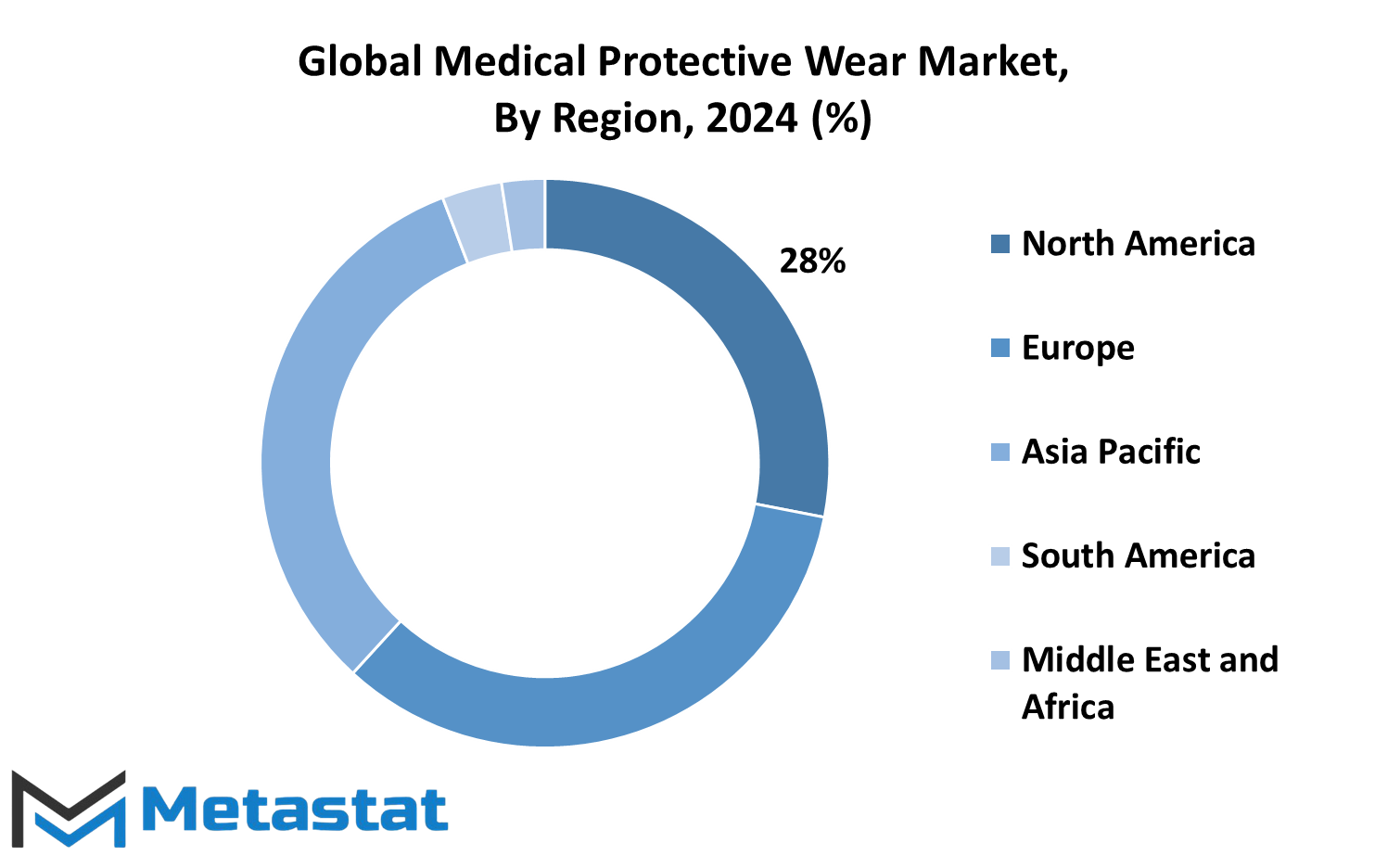
COMPETITIVE PLAYERS
The Global Medical Protective Wear is a fiercely competitive space with a number of key players who would define the future of this space. Companies such as 3M, Andersen Sterilizers, and Ansell are key contributors to the growth and innovations in this market. Their involvement spans design, manufacturing, and distribution of medical protective wear.
3M offers a wide variety of personal protective equipment, all of which the company continues to develop in the medical protective wear segment. At the company level, innovation makes its products meet new safety standards and technologies continually. An equally important place is held by Andersen Sterilizers with its sterilization solutions, important in retaining efficiency and safety for medical protective wear. Ansell focuses on high-quality protective gloves and garments, addressing distinct infection control and safety needs, and hence contributes much to the market.
Other major brands are Barco Uniform and Cardinal Health, with professional medical wear focusing on functionality and comfort. When style and durability in medical garments are concerned, nobody tops Barco Uniform. Cardinal Health also has an entire line of protective apparel designed to meet strict healthcare requirements. Complementing these are the wide-ranging product lines from Careismatic Brands and Derekduck Industries Corp. for varied treatment environments and needs.
Critical players that help shape the competitive landscape include FIGS and Fortive. FIGS represents modern, high-performance medical apparel, whereas Fortive's contribution in the area of industrial technology is considered crucial in designing new protective wear solutions. Grahame Gardner Ltd and Halyard Health have oriented themselves to ensure the supply of protective clothing adhering to the highest parameters of quality and safety, thereby serving healthcare professionals.
Other prominent participants include Healing Hands and Iguanamed, which provide products that combine comfort with protection. One of the big players in this market is Kimberly-Clark Worldwide, Inc., which offers lines of protective medical wear that pass under very strict industry standards. Other providers of protective, specialized medical apparel meant for particular health settings are KOI and Lakeland Inc. Landau Uniforms and Med Couture offer their share to the market by focusing on functionality and style.
Medline and Plasti Surge Industries Pvt. also offer a wide array of medical protective wear solutions, thereby making the market highly competitive. Simon Jersey, STERIS, and Superior Group of Companies are those companies whose innovative products and solutions are going to decide, to a large extent, the future course of medical protective gear. Tronex International, Inc. brings in its niche protective wear for its various health care applications.
The Global Medical Protective Wear market, looking ahead, shall progressively keep changing in line with changes in technology and increasing demands with respect to safety and comfort. The involvement of these key players makes this market dynamic, continuous innovations, and improvements in medical protective wear.
Medical Protective Wear Market Key Segments:
By Product
- Coveralls
- Gowns
- Others
By End-user
- Hospitals
- Home Healthcare
- Outpatient/Primary Care Facilities
- Others
Key Global Medical Protective Wear Industry Players
- 3M
- Andersen Sterilizers
- Ansell
- Barco Uniform
- Cardinal Health
- Careismatic Brands
- Derekduck Industries Corp.
- FIGS
- Fortive
- Grahame Gardner Ltd
- Halyard Health
- Healing Hands
- Iguanamed
- Kimberly-Clark Worldwide, Inc.
- KOI
WHAT REPORT PROVIDES
- Full in-depth analysis of the parent Industry
- Important changes in market and its dynamics
- Segmentation details of the market
- Former, on-going, and projected market analysis in terms of volume and value
- Assessment of niche industry developments
- Market share analysis
- Key strategies of major players
- Emerging segments and regional growth potential



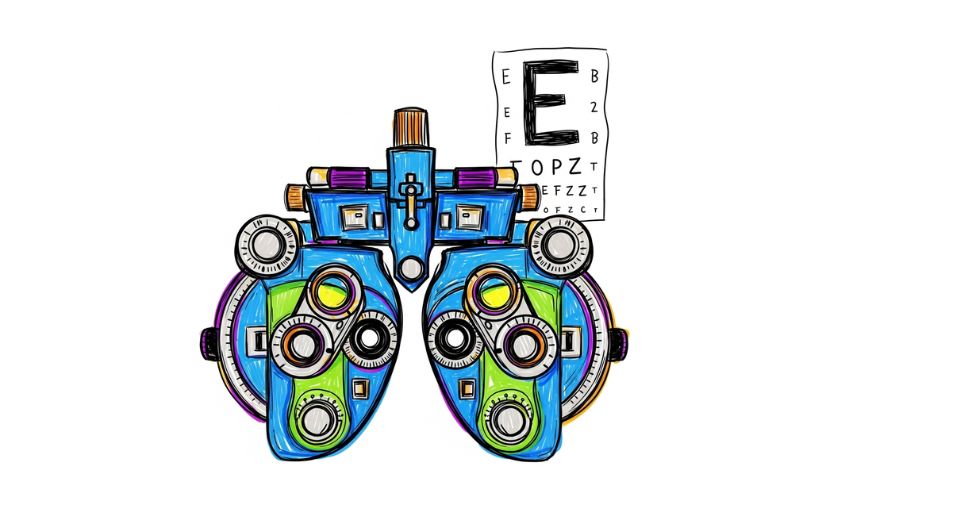
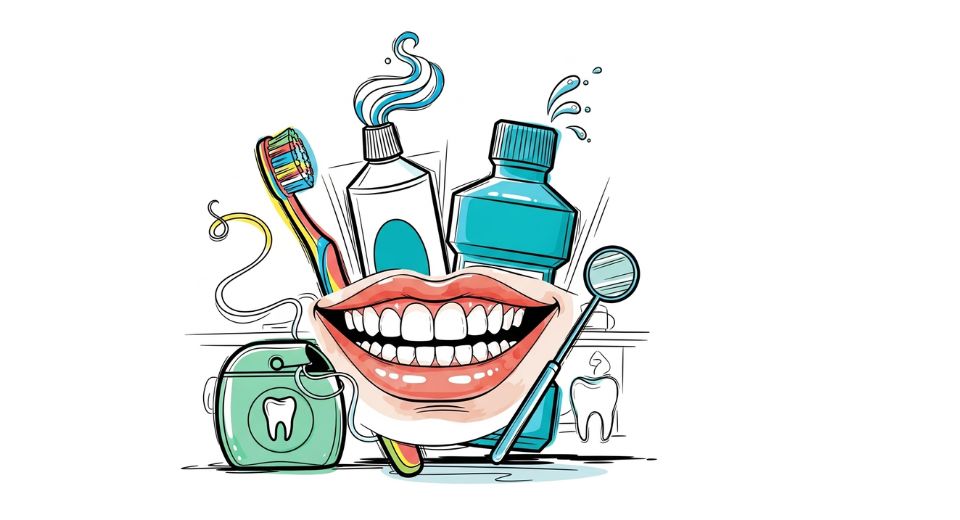
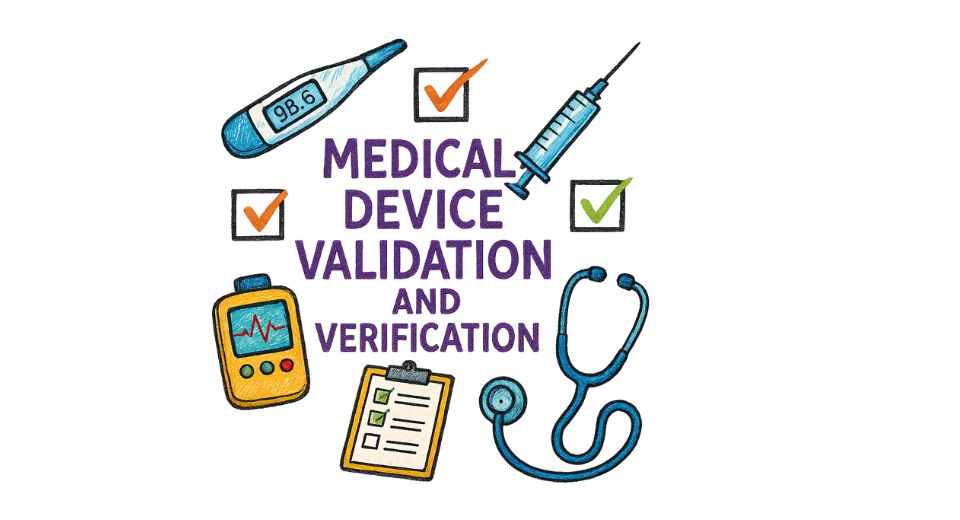
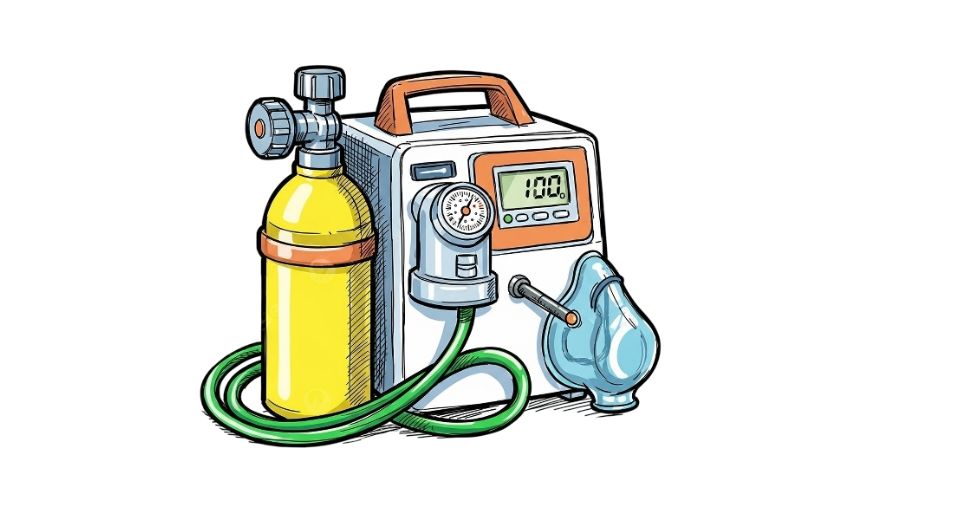

 US: +1 3023308252
US: +1 3023308252






